Thingiverse
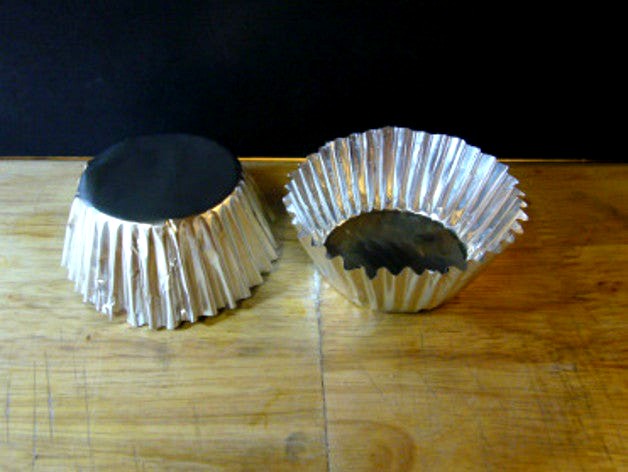
Baking cup molds by Terminus
by Thingiverse
Last crawled date: 3 years ago
Make your own foil baking cups.
My original intention was to make paper cupcake cups like they sell in the store.
There were several difficulties. For one, baking cups seem to be made of a very thin parchment paper, which might be hard to find. Regular parchment either tore or didn't hold its shape.
Actual cup machines use heating bands around the molds. They may also use steam or water, and permanently crease the paper much like a steam iron does clothing.
Here's a video of a typical baking cup machine in action. Notice the large diameter pre-forming die, and then a plunger pushes it down into the finish die. Each cycle uses a stack of perhaps 10 sheets at a time, which explains why store-bought baking cups come in compressed stacks.https://www.youtube.com/watch?v=kuf3aPkq_WI
These printed molds sorta work on paper, but it's difficult. I've tried printer/copy paper, parchment, pages from a book, and whatever was laying around, but the cups are generally inferior to aluminum foil. A major problem is the paper tears when the applied force is sufficient to make a permanent crease. Wax paper hardly holds the shape at all.
But aluminum foil holds the shape. Cheap, thin foil is adequate for use in cupcake tins. Heavy-duty will stand on its own and doesn't need a cupcake pan. The expensive non-stick heavy-duty stuff might be worth the cost if appearances matter.
These molds make "2 1/2 inch" cups (to fit a cupcake tin that measures 2 1/2 inch across the top of a cavity).
My method is to cut several foil circles at one time. Fold the foil, or stack the sheets, and draw a 4 1/2 inch circle with a felt pen, then cut with a scissors. A puff of breath will separate the delicate leaves.
A little practice helps. Getting the foil centered is the hardest part.
The pre-form mold pre-shapes the foil, because it's a deep draw, and preforming helps. The finish mold makes the actual cup.
If you think you can get by without the pre-form set, go for it.
Use too much mold-force and the paper or foil gets perforated or tears. That shouldn't be a big problem if your batter is on the thick side.
Sandpaper any rough spots on the prints to reduce holes and tears.
Being gentle with foil is the trick. There's no need to completely close the molds.
0.30 layers, minimum fill. About an hour per piece if I recall. ABS.
A 4 1/2 inch circle drawing guide is provided, in case nothing suitable is available.
Metric files were uploaded on 12-11-19. If your software imports impossibly tiny files, try the Metric versions.
My original intention was to make paper cupcake cups like they sell in the store.
There were several difficulties. For one, baking cups seem to be made of a very thin parchment paper, which might be hard to find. Regular parchment either tore or didn't hold its shape.
Actual cup machines use heating bands around the molds. They may also use steam or water, and permanently crease the paper much like a steam iron does clothing.
Here's a video of a typical baking cup machine in action. Notice the large diameter pre-forming die, and then a plunger pushes it down into the finish die. Each cycle uses a stack of perhaps 10 sheets at a time, which explains why store-bought baking cups come in compressed stacks.https://www.youtube.com/watch?v=kuf3aPkq_WI
These printed molds sorta work on paper, but it's difficult. I've tried printer/copy paper, parchment, pages from a book, and whatever was laying around, but the cups are generally inferior to aluminum foil. A major problem is the paper tears when the applied force is sufficient to make a permanent crease. Wax paper hardly holds the shape at all.
But aluminum foil holds the shape. Cheap, thin foil is adequate for use in cupcake tins. Heavy-duty will stand on its own and doesn't need a cupcake pan. The expensive non-stick heavy-duty stuff might be worth the cost if appearances matter.
These molds make "2 1/2 inch" cups (to fit a cupcake tin that measures 2 1/2 inch across the top of a cavity).
My method is to cut several foil circles at one time. Fold the foil, or stack the sheets, and draw a 4 1/2 inch circle with a felt pen, then cut with a scissors. A puff of breath will separate the delicate leaves.
A little practice helps. Getting the foil centered is the hardest part.
The pre-form mold pre-shapes the foil, because it's a deep draw, and preforming helps. The finish mold makes the actual cup.
If you think you can get by without the pre-form set, go for it.
Use too much mold-force and the paper or foil gets perforated or tears. That shouldn't be a big problem if your batter is on the thick side.
Sandpaper any rough spots on the prints to reduce holes and tears.
Being gentle with foil is the trick. There's no need to completely close the molds.
0.30 layers, minimum fill. About an hour per piece if I recall. ABS.
A 4 1/2 inch circle drawing guide is provided, in case nothing suitable is available.
Metric files were uploaded on 12-11-19. If your software imports impossibly tiny files, try the Metric versions.
Similar models
grabcad
free

Aluminum Tin Foil Cup Forming Packaging Production Line
...------------------------------------------------------------- -------
file format includes
- solidworks 2018
- step
- iges
- stl
grabcad
free

Mold for Silicone Cupcake Cup | TRINOTA
...upcake cup | trinota
grabcad
molds required to produce a silicone cupcake baking cup. all molds are 3d printed.
www.trinota.com
thingiverse
free

Templates for Cupcake Queen paper cup press by DasMia
...is video:
you'll find the amazing cupcake queen paper cup press from walter_b here:https://www.thingiverse.com/thing:2002258
thingiverse
free

Circle Drawing Guide by smorgana
...ngiverse
a guide for drawing circles. nominal sizes are 3, 2, 1, 1/2 and 1/4 inches. sides can also be used as a straight edge.
grabcad
free

single cup drip coffee maker
...d), in the cone, put in 1 -2 tablespoons of coffee, and then pour hot water into it.
this maker can make one 10z cup of coffee.
thingiverse
free

Kitchen roll holder by Starwhooper
...erse
will hold dn50 hoses that tray kitchen roll for:
• baking paper
• aluminum foil
and
• cling film
screw din 7981 form z 16mm
thingiverse
free

Cupcake case maker by irts
...paper cases used for making cup cakes and other similar baked goods. they do sell baking parchment though, so...
thingiverse
free

Stackable tin foil/plastic wrap/cling wrap holder and dispenser version 2 by mammo300
...for rolls that will fit is 2.8 inches, which will work for almost all rolls of tin foil, plastic wrap, etc, but not paper towels.
thingiverse
free

The Flat Compass by mitchgonepro
...have to do is use one finger to hold the pivot tip on the paper, insert your pencil into the desired circle radius and draw away!
thingiverse
free

Snow Cone Molds and Cups by DuaneIndeed
...star.
if you'd rather use disposable paper cups, the cone mold is compatible with sno-kone brand cups: http://a.co/d/blcf3cb
Terminus
turbosquid
$3

Joshua Graham Terminus Book
... available on turbo squid, the world's leading provider of digital 3d models for visualization, films, television, and games.
3d_export
$23

heated towel rails terminus astra
...r a particular frame. the anti-aliasing modifier is turned on (display in the viewport - 0 iterations, on the render 1 iteration)
thingiverse
free

garrus terminus armor
...garrus terminus armor
thingiverse
fixed static garrus in terminus armor, with and without the helmet
thingiverse
free

Funnel by Terminus
...funnel by terminus
thingiverse
a funnel to fit gallon water bottles.
thingiverse
free

Ravioli Pin by Terminus
...ravioli pin by terminus
thingiverse
a simple pin, but it works.
thingiverse
free

rocket remix by Terminus
...rocket remix by terminus
thingiverse
rocket by jjbtexas remix
thingiverse
free

soldering station by Terminus
...soldering station by terminus
thingiverse
a compact soldering station
thingiverse
free

Pellets .177 by Terminus
...pellets .177 by terminus
thingiverse
plastic air rifle pellets
thingiverse
free

Lid rack by Terminus
...lid rack by terminus
thingiverse
anti-sloppy-kitchen device.
thingiverse
free

Coffee dispenser by Terminus
...coffee dispenser by terminus
thingiverse
cabinet mount coffee dispenser.
Baking
turbosquid
$5
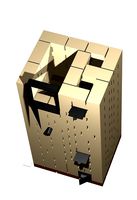
Bake
...squid
royalty free 3d model bake for download as 3ds and fbx on turbosquid: 3d models for games, architecture, videos. (1247617)
turbosquid
free
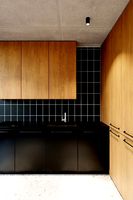
Kitchen Baked 2020 Max Scene Baked
...0 max scene baked for download as max, blend, gltf, and fbx on turbosquid: 3d models for games, architecture, videos. (1611240)
turbosquid
$4
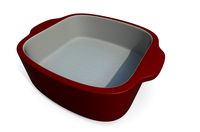
Baking Dish
...
royalty free 3d model baking dish for download as ma and obj on turbosquid: 3d models for games, architecture, videos. (1471648)
turbosquid
$39

baked duck
...ty free 3d model baked duck for download as max, obj, and fbx on turbosquid: 3d models for games, architecture, videos. (1365302)
turbosquid
$19
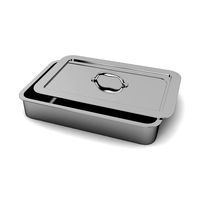
Baking Tray
...y free 3d model baking tray for download as max, 3ds, and obj on turbosquid: 3d models for games, architecture, videos. (1547522)
turbosquid
$39
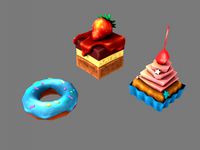
Baking Collection
...odel baking collection for download as max, obj, fbx, and dae on turbosquid: 3d models for games, architecture, videos. (1408847)
turbosquid
$2
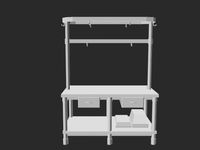
Baking Station
... available on turbo squid, the world's leading provider of digital 3d models for visualization, films, television, and games.
3d_export
$13
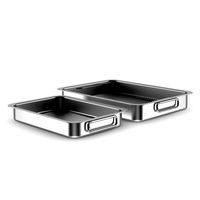
Baking Dishes 3D Model
...rome cook cooker cooking hot meat room interior home house 3ds max cinema c4d mental
baking dishes 3d model cgaxis 52493 3dexport
3d_export
$10
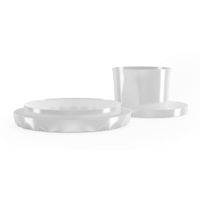
Baking Plates 3D Model
...ite ceramic round set room interior home house 3ds max cinema c4d mental ray fbx obj
baking plates 3d model cgaxis 52398 3dexport
3d_export
$10

Baking Pans 3D Model
...el
3dexport
cookware kitchenware baking pans kitchen muffin tray cookie sheet pie pan
baking pans 3d model 3dsiver 79078 3dexport
Molds
3ddd
$1

molding
...molding
3ddd
молдинг
molding
3ddd
$1
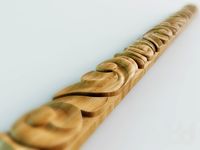
molding
...molding
3ddd
молдинг , резьба
molding
3d_export
$10
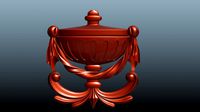
molding
...molding
3dexport
molding, casting, baguette, decoration
3d_export
$10

molding
...molding
3dexport
molding, casting, baguette, decoration
3d_export
$10

molding
...molding
3dexport
molding, casting, baguette, decoration
3d_export
$10

molding
...molding
3dexport
molding, casting, baguette, decoration
3d_export
$10

molding
...molding
3dexport
molding, casting, baguette, decoration
3d_export
$10

molding
...molding
3dexport
molding, casting, baguette, decoration
3d_export
$10

molding
...molding
3dexport
molding, casting, baguette, decoration
design_connected
$16

Mold
...mold
designconnected
eternit mold computer generated 3d model. designed by charlot, michel.
Cup
3d_ocean
$2

Cup
...cup
3docean
bardak cup glass tea cup
low poly cup
archibase_planet
free

Cup
...planet
cup teacup kitchen ware glass cup coffee cup demitasse
cup n110413 - 3d model (*.gsm+*.3ds) for interior 3d visualization.
archibase_planet
free

Cup
...cup
archibase planet
cup teacup coffee-cup
cup - 3d model (*.gsm+*.3ds) for interior 3d visualization.
archibase_planet
free

Cup
...cup
archibase planet
cup teacup coffee-cup
cup - 3d model (*.gsm+*.3ds) for interior 3d visualization.
archibase_planet
free

Cups
...cups
archibase planet
cups cup teacup teacups
cups - 3d model (*.gsm+*.3ds) for interior 3d visualization.
archibase_planet
free

Cups
...cups
archibase planet
cups cup kitchen ware
cups - 3d model (*.gsm+*.3ds) for interior 3d visualization.
3d_export
$7

cup
...cup
3dexport
this is a cup
3d_export
$7

Cup
...cup
3dexport
cup
3d_export
$5

cup
...cup
3dexport
cup
3d_export
$5

Cup
...cup
3dexport
cup
